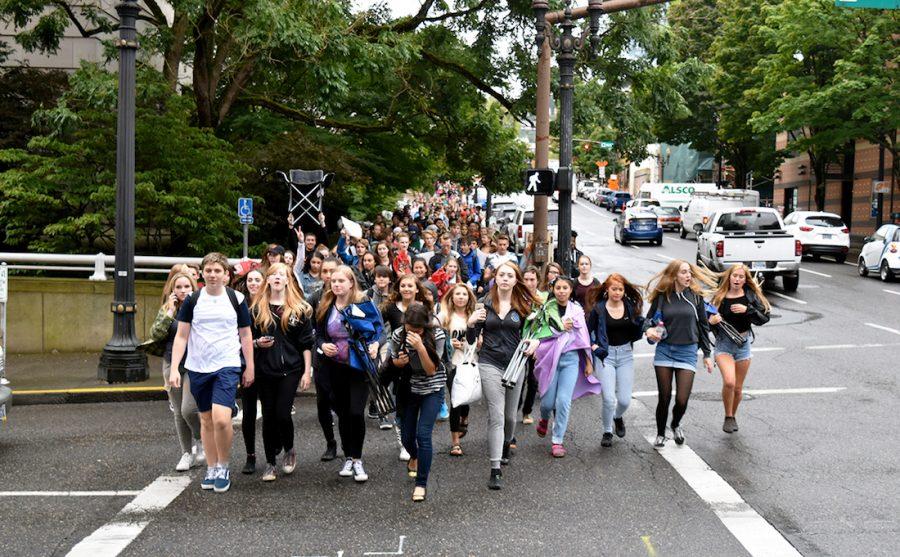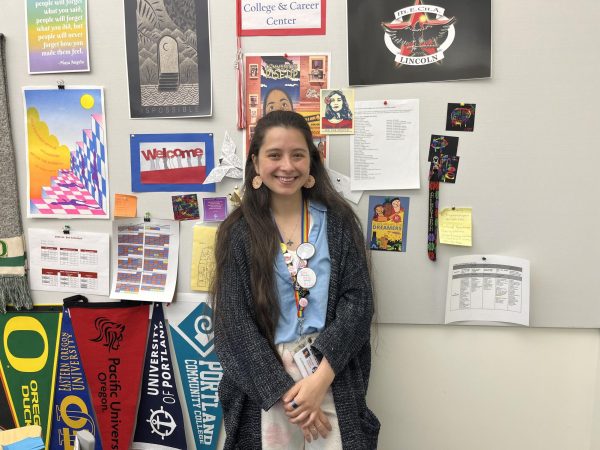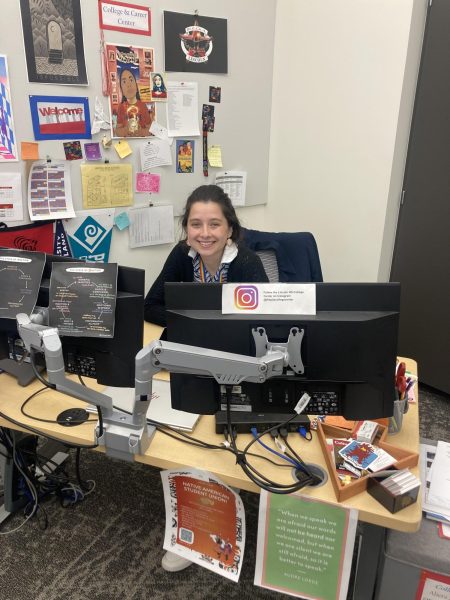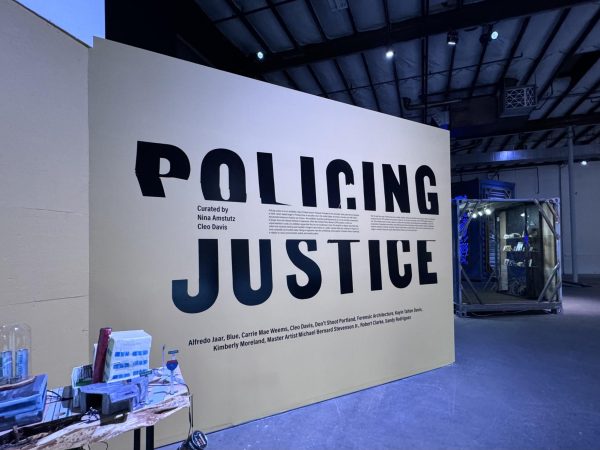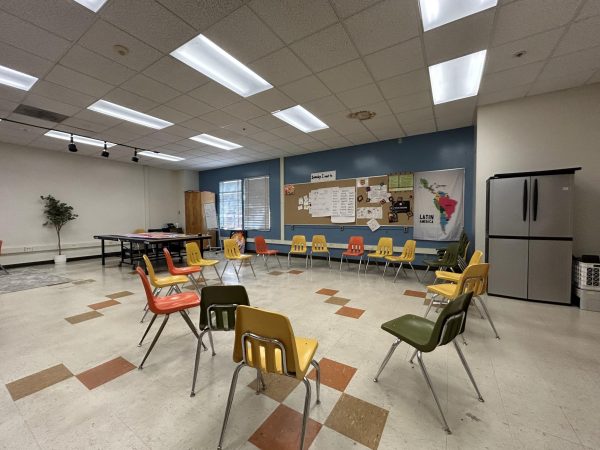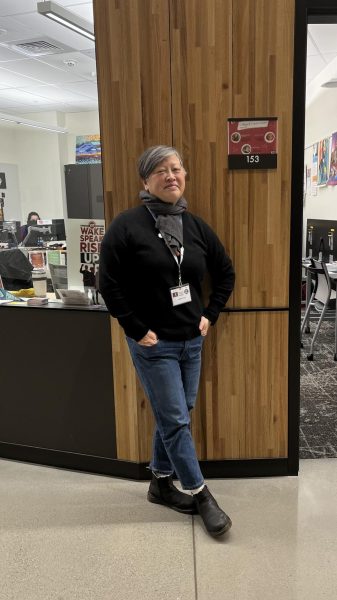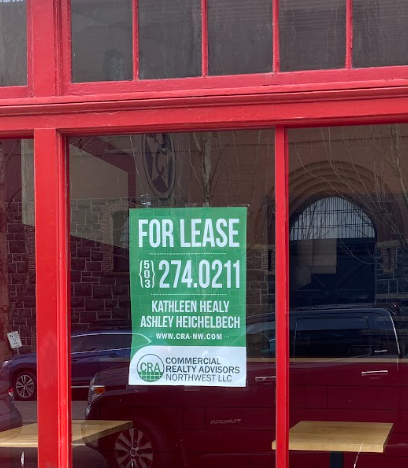Teach us our history
The walkout on Sept. 7 is already being integrated into some teachers’ curricula.
At least six teachers as well as Principal Peyton Chapman joined Lincoln students to support and witness the bond-measure walkout on Sept. 7.
The expression of unity, power, and thirst for justice, was a feat to go down in history! But does any of this matter? Will any of this be remembered? Will we be remembered?
We hope we made a difference. We have seen during the week after the walkout that our teachers hoped the same. The Cardinal Times spoke with a bunch of your favorite teachers and heard about what they were doing in their classes to analyze the walkout as a teaching tool, and to mark its place in Lincoln history.
Alexander Stegner teaches three U.S. History classes and two Government and Economics classes. He was one of few adults who gained a first-hand view of the full walkout, which eventually led all the way to Benson High School. Along with some other World History/Government and Economic teachers, Mr. Stegner has already begun, and will continue to use, the student protest as a teaching example.
“The plan is to use the walkout as an example of a Direct Action Movement,” said Stegner. The day of the walkout, and the day after, Stegner was already having discussions about the event in his classes. “This is something that our students obviously really care about… just giving them that space to kind of just talk and ask questions, and debrief it a little bit.” He was happy to talk about his “favorite [question] to ask students: ‘What should we do next?’”
Fred Fox was at the walkout as well. Fox said he opened his discussions in two of his U.S. History classes and one of his Queer History classes about the walkout. He considered the conversations “very inspirational.”
“It was great because to me I think the biggest take away that a student hopefully got was that every student was a part of it. Right? That it was a moment in history… There were students that stayed who wanted to go. There were students that stayed who didn’t wanted to go.”
Spanish teacher Trevor Todd was very impressed with the student-driven walkout. He said that as a student he took part in a lot of protests and walkouts. He believes that “Students do have a lot of power.”
“I was really proud with the way the march was organized and well communicated and that the plans were done in a flexible way where we were able to show some solidarity with the sister school across the river,” says Todd.
Todd is disappointed that the action didn’t produce the outcome students wanted. However, he did find the alternate outcome to be very worthy, almost as much so as what was fought for.
He believes that, “It brought a lot of good conversation into households, social media, and the press here in town. It shone a pretty bright light on an issue that was being swept under the rug and the student action was able to bring that to the center of a city wide conversation.”
A strong supporter of the walkout, is Government and U.S. History teacher Blair Hennessy. She was moved by the student protest, especially because “they are fighting for a building that they won’t even see. That speaks volumes about its essential justice for them around education and their learning… Just the fact that it’s for future students coming in it feels pretty selfless and adds more to their cause.”
Hennessy plans to use the protest in her future curriculum. “The collective action, the fact that students felt powerful and felt empowered is a great example to show [future students].”
Along with many others, she has already begun to speak of the event with her students- “It was really cool to debrief with students because they could understand ‘this worked,’ and ‘this didn’t work,’ and ‘it was chaotic,’ and ‘we didn’t get it.’ They started to understand the complexities of direct action and that is critical to becoming citizens and to becoming civically engaged.”

